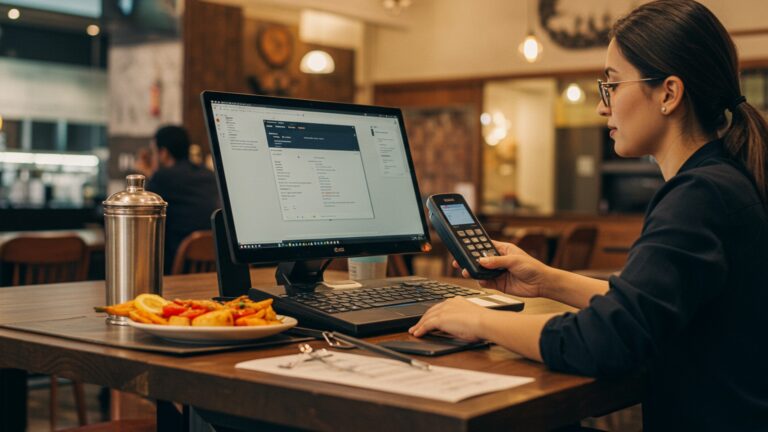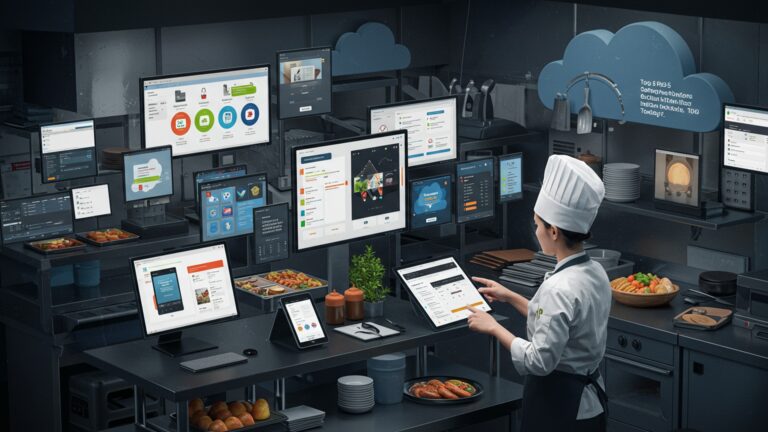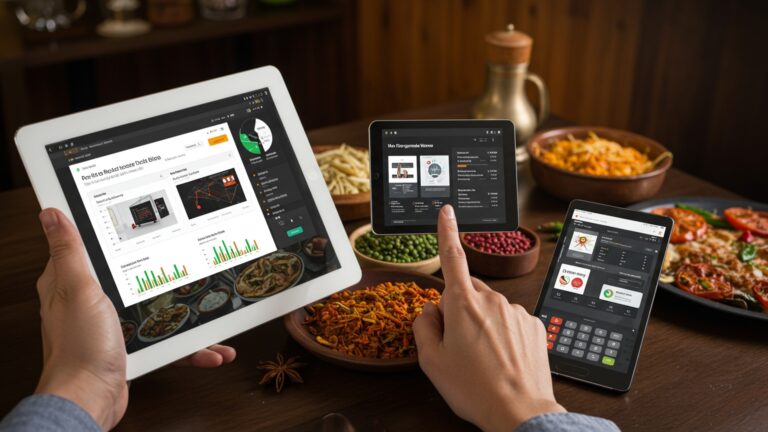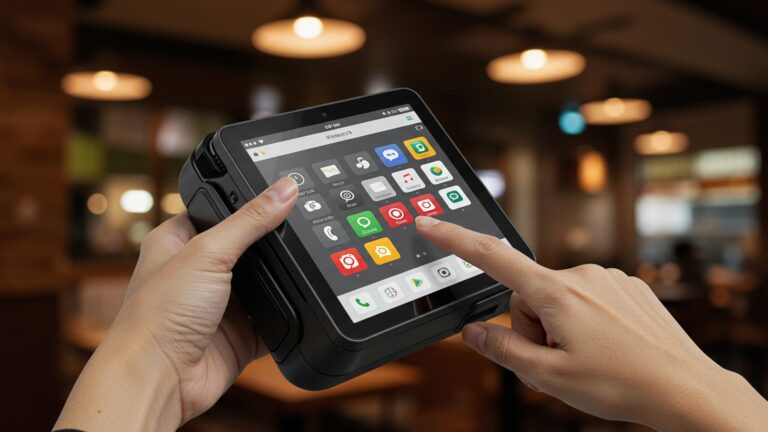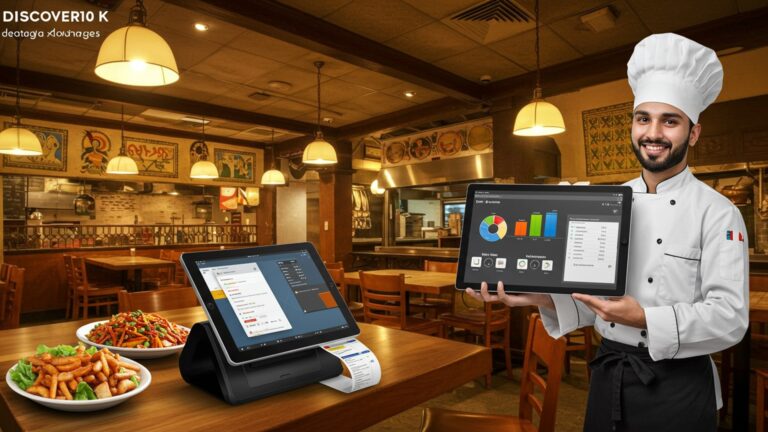7 Essential Tips to Choose the Best Restaurant POS Software in India
The dynamic Indian F&B landscape demands more than just basic billing; it requires robust digital infrastructure. With the surge in online deliveries, QR code ordering. UPI payments post-pandemic, choosing the right Restaurant POS software India is critical for operational excellence. Modern restaurateurs navigate complexities from inventory management and staff scheduling to integrated loyalty programs, all while aiming for seamless guest experiences. A truly effective POS system now integrates cloud-based analytics and third-party delivery platforms, becoming the central nervous system for profitable growth rather than just a transactional tool. Selecting the optimal solution transforms daily operations and future-proofs your establishment.
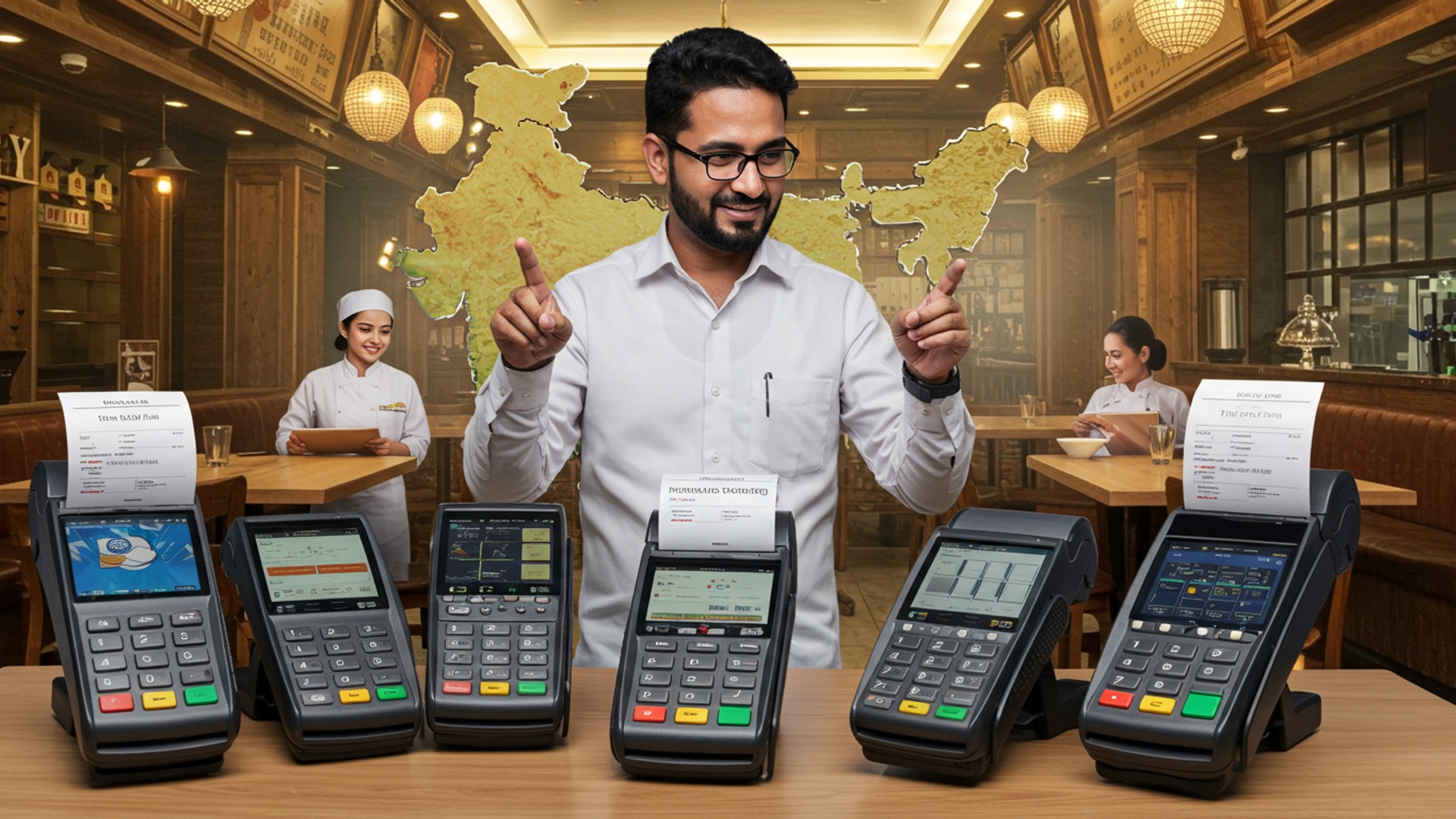
Understanding Your Restaurant’s Unique Needs
Choosing the ideal Point of Sale (POS) system for your restaurant begins not with comparing software features. with a deep dive into your own operational requirements. A “one-size-fits-all” approach rarely works, especially in the diverse Indian culinary landscape. A POS system, at its core, is a central hub for managing sales, orders, payments. various other restaurant operations. For instance, a small café with a counter-service model will have vastly different needs than a multi-cuisine fine-dining establishment or a bustling Quick Service Restaurant (QSR) chain.
- Quick Service Restaurants (QSRs) & Cafes
- Fine Dining & Casual Restaurants
- Bars & Pubs
- Food Trucks & Pop-ups
These often prioritize speed, efficient order taking, quick billing. perhaps integration with food delivery platforms. Their POS needs might focus on a simple, intuitive interface, robust counter sales. rapid transaction processing.
These establishments require advanced table management, reservation systems, split billing options, detailed KOT (Kitchen Order Ticket) management. often sophisticated inventory tracking for high-value ingredients. A personalized customer experience through CRM features is also a plus.
Specific features like happy hour management, detailed drink inventory. robust billing with tabs are crucial.
Mobility, offline capabilities. compact hardware are paramount.
Before even looking at vendors for Restaurant POS software India, sit down with your team and meticulously list out every function you currently perform manually or struggle with. Consider your current bottlenecks and what you envision your ideal operational flow to be. This clarity forms the bedrock of an informed decision.
Prioritizing Scalability and Flexibility for Growth
Your restaurant business isn’t static; it’s a dynamic entity with ambitions for growth. The Restaurant POS software India you choose today should be capable of growing alongside you. Scalability refers to the system’s ability to handle increased workloads or additional outlets without a significant drop in performance or a complete overhaul. Flexibility, on the other hand, relates to its adaptability to new features, menu changes, or evolving business models.
Imagine a scenario where your single cloud kitchen suddenly expands to three outlets across different cities. A scalable POS system would allow you to:
- Add new locations seamlessly
- Manage increased transaction volumes
- Integrate new technologies
- Consolidate reporting
Centralized menu management, pricing. promotions across all outlets.
The system should not lag or crash during peak hours.
Easily connect with evolving payment methods or third-party delivery platforms.
View sales and performance data from all outlets in one dashboard, providing a holistic view of your business’s health.
Look for solutions that offer modular add-ons rather than forcing you into an expensive upgrade for every new feature. Cloud-based POS systems often excel in scalability and flexibility, as they can be updated remotely and accessed from anywhere, making them a popular choice for Restaurant POS software India.
Key Features: Beyond Just Billing
While billing is the core function, modern Restaurant POS software India offers a suite of features designed to optimize every facet of your operation. Understanding which features are essential for your specific restaurant type is crucial. Here’s a breakdown of critical functionalities:
- Order Management
- Inventory Management
- Reporting & Analytics
- Customer Relationship Management (CRM)
- Online Ordering & Delivery Integration
- Employee Management
- Menu Management
This includes KOT (Kitchen Order Ticket) generation, table management (graphical layouts, status tracking), split billing, order modifications. course management for fine dining.
Crucial for cost control. Look for features like real-time stock tracking, recipe management (automatically deducting ingredients as dishes are sold), vendor management, purchase order generation. waste management. This helps in reducing pilferage and optimizing procurement.
A good POS system provides insightful data. Key reports include daily/weekly/monthly sales, item-wise sales, staff performance, peak hours, customer preferences. profitability analysis. These insights are invaluable for strategic decision-making.
Build loyalty programs, manage customer profiles, track order history. gather feedback. This helps in personalizing promotions and enhancing customer retention.
With the rise of food aggregators like Swiggy and Zomato in India, seamless integration is no longer a luxury but a necessity. The POS should ideally centralize orders from various platforms to avoid manual entry errors and streamline kitchen operations.
Track staff attendance, manage shifts, assign roles and permissions. potentially integrate with payroll systems.
Easy updating of menu items, pricing, discounts. promotions across all channels.
Here’s a simplified comparison of feature priorities:
| Feature | QSR Priority | Fine Dining Priority |
|---|---|---|
| Rapid Billing | High | Medium |
| Table Management | Low | High |
| Detailed Inventory (Recipe Costing) | Medium | High |
| Online Ordering Integration | High | Medium |
| Customer Loyalty Programs | Medium | High |
| Staff Performance Tracking | Medium | High |
| Offline Mode | High | Medium |
Ensuring User-Friendliness and Minimal Training
A sophisticated POS system is only as good as its usability. If your staff finds it difficult to operate, it will hinder efficiency, lead to errors. increase training costs. The best Restaurant POS software India solutions are designed with an intuitive user interface (UI) and user experience (UX).
Consider a personal anecdote: I once consulted for a small café that invested in a feature-rich POS. While powerful, its interface was clunky and required multiple steps for simple tasks. New hires struggled, leading to long queues and frustrated customers. After switching to a more user-friendly system, their service speed improved by nearly 20%. staff morale significantly boosted. The time saved in training alone justified the change.
When evaluating, ask for a demo and let your actual staff (chefs, servers, cashiers) try it out. Look for:
- Intuitive Navigation
- Clear Visuals
- Minimal Clicks
- Customizable Layouts
- Language Support
Can new users easily find common functions?
Are menu items, tables. order statuses easy to comprehend at a glance?
Can common tasks like taking an order or processing a payment be done in just a few taps?
Can the interface be adapted to your menu and workflow?
While English is common, some local vendors for Restaurant POS software India might offer regional language options, which can be a huge plus for diverse staff.
Remember, reduced training time means your team can be productive faster, directly impacting your bottom line.
Seamless Integration Capabilities
Your POS system shouldn’t operate in a vacuum. It’s a critical component of a larger technological ecosystem within your restaurant. The ability of your Restaurant POS software India to seamlessly integrate with other essential tools is paramount for efficiency and data accuracy.
- Payment Gateways
- Accounting Software
- Online Food Aggregators
- Loyalty & CRM Platforms
- HR & Payroll Systems
In India, integrating with various payment options is non-negotiable. This includes credit/debit card machines (EDC terminals), UPI (Unified Payments Interface) for QR code payments, mobile wallets (Paytm, Google Pay). net banking. A system that can consolidate these transactions and reconcile them automatically saves immense time and reduces errors.
Connecting your POS with accounting platforms like Tally, QuickBooks, or Zoho Books can automate financial reporting, reduce manual data entry. provide a clearer picture of your financial health. Sales data, expenses. inventory costs flow directly into your accounting system.
As mentioned, integration with platforms like Swiggy, Zomato. even your own website’s online ordering system helps centralize orders, manage menus. prevent missed orders or manual input errors. This is a crucial aspect for any modern Restaurant POS software India.
If the POS doesn’t have robust in-built CRM, it should integrate with third-party loyalty programs to manage customer points, rewards. targeted promotions.
For larger establishments, integrating staff attendance and shift data with HR and payroll software can streamline employee management.
Before committing, always ask potential vendors about their existing integrations and their API (Application Programming Interface) capabilities. A well-documented API allows for custom integrations if needed in the future.
// Example of a conceptual API call for order integration
// This illustrates how different systems might communicate
POST /api/v1/orders
Headers: { "Authorization": "Bearer YOUR_API_KEY", "Content-Type": "application/json"
}
Body: { "orderId": "ORD12345", "restaurantId": "RES001", "items": [ {"itemId": "MENU001", "quantity": 2, "price": 150}, {"itemId": "MENU005", "quantity": 1, "price": 250} ], "totalAmount": 550, "paymentMethod": "UPI", "customerName": "Ravi Sharma", "deliveryAddress": "123 Main St, Bangalore"
}
This
block illustrates how an online ordering platform might send an order to your POS system's API, highlighting the technical backbone of seamless integration.
Assessing Support, Maintenance. Updates
Even the most robust Restaurant POS software India can encounter issues. When it does, reliable support is your lifeline. This aspect is often overlooked but is critical for uninterrupted operations. Downtime means lost sales and frustrated customers.
- 24/7 Support
- Multiple Support Channels
- Local Support
- On-site vs. Remote Support
- Service Level Agreement (SLA)
- Updates & Upgrades
- Training & Documentation
Restaurants operate beyond typical business hours. Ensure your vendor offers round-the-clock support, especially for critical issues.
Look for vendors who offer support via phone, email, chat. potentially a dedicated support portal.
For the Indian market, local support teams who interpret regional nuances, payment methods. specific hardware issues can be invaluable. Language barriers can also be a challenge with overseas support.
comprehend what kind of support is offered for hardware issues. Can they send a technician if needed?
A good vendor will provide an SLA outlining response times, resolution times. uptime guarantees. This ensures accountability.
How often does the software receive updates? Are these updates free, or do they come with additional costs? Regular updates are crucial for security, bug fixes. new feature additions, keeping your Restaurant POS software India competitive and efficient.
Beyond initial setup, does the vendor provide ongoing training resources, user manuals. online tutorials? This helps in onboarding new staff and refreshing existing knowledge.
Always ask for references and speak to other restaurant owners using the same system to gauge their experience with the vendor's support.
Evaluating Cost-Effectiveness and Return on Investment (ROI)
The price tag of a Restaurant POS software India is more than just the initial purchase or monthly subscription fee. You need to consider the Total Cost of Ownership (TCO) and, more importantly, the potential Return on Investment (ROI).
- Pricing Models
- Subscription-based (SaaS)
- One-time Purchase (On-premise)
- Hardware Costs
- Installation & Setup Fees
- Training Costs
- Hidden Fees
Most common for cloud POS. You pay a monthly or annual fee per terminal or location. This often includes updates and support. Initial cost is lower. ongoing.
You buy the software license upfront. Higher initial cost but no recurring software fees (though maintenance/support might be separate). Requires your own servers and IT management.
Consider the cost of POS terminals, receipt printers, cash drawers, kitchen display systems (KDS). handheld ordering devices. Some vendors bundle hardware, others require separate purchases.
Are there charges for initial installation, configuration. data migration?
While some basic training might be included, extensive training or retraining for new staff might incur additional costs.
Be wary of charges for integrations, specific reports, or premium support tiers. Get a clear breakdown of all potential costs.
To calculate ROI, think beyond just cost savings. Consider:
- Increased Efficiency
- Reduced Waste
- Improved Customer Loyalty
- Data-Driven Decisions
- Error Reduction
Faster order taking, billing. kitchen operations lead to more table turns and happier customers.
Better inventory management minimizes spoilage and pilferage.
CRM features can lead to repeat business and higher average checks.
Analytics help optimize menus, pricing. staffing, leading to higher profitability.
Automated processes reduce human error in billing and inventory.
For example, a restaurant owner in Delhi invested in a comprehensive Restaurant POS software India that cost them ₹30,000 annually. But, within six months, they saw a 5% reduction in food waste due to better inventory tracking and a 10% increase in average order value through intelligent upselling suggestions from the POS. These gains far outweighed the annual cost, demonstrating a clear and significant ROI.
Security and Data Protection
In an increasingly digital world, the security of your restaurant's and customers' data cannot be overstated. A robust Restaurant POS software India must prioritize data protection to prevent breaches and ensure compliance with relevant regulations.
- Payment Card Industry Data Security Standard (PCI DSS) Compliance
- Data Encryption
- Cloud vs. On-Premise Security
- Cloud POS
- On-Premise POS
- User Access Control
- Regular Backups
- Audit Trails
If you process credit card payments, ensure your POS system and its integrated payment gateway are PCI DSS compliant. This standard ensures that sensitive cardholder data is handled securely.
All sensitive data, both in transit (when communicating with servers) and at rest (when stored), should be encrypted. This makes it unreadable to unauthorized parties.
Typically managed by the vendor, who invests heavily in cybersecurity infrastructure, redundant backups. disaster recovery. But, you're relying on their security protocols.
You are responsible for all security measures, including network security, server maintenance. data backups. This requires significant IT expertise and investment.
The POS should allow you to set granular permissions for different staff roles. For instance, only managers might have access to sensitive reports or the ability to process refunds.
Ensure the system performs regular, automated backups of your data. In case of a system failure, you need to be able to restore your data quickly and efficiently.
A good POS system should log all significant actions performed by users, creating an audit trail. This helps in tracking down errors or suspicious activities.
Always inquire about the vendor's security protocols, data center locations (especially if they're outside India and potentially subject to different data privacy laws). their plan for responding to security incidents. Protecting your data is not just about compliance; it's about maintaining customer trust and safeguarding your business reputation.
Conclusion
Choosing the right POS for your Indian restaurant isn't merely about ticking features off a list; it's about empowering your entire operation. From my experience, many restaurateurs overlook the crucial aspect of local support and seamless UPI integration, which is non-negotiable in today’s dynamic payment landscape. Remember, a robust system should effortlessly handle everything from fluctuating seasonal menus to managing multiple delivery aggregators, a common challenge in bustling cities like Mumbai or Bangalore. To truly make an informed decision, insist on a live demo with your actual staff inputting orders and handling returns. This practical test reveals more about workflow compatibility and user-friendliness than any brochure ever could. As the industry rapidly adopts cloud-based solutions and AI-driven analytics, ensure your chosen software is scalable and future-proof. Don't view this as a mere expense. rather a strategic investment that, when chosen wisely, will streamline operations, enhance customer satisfaction. ultimately drive significant growth for your restaurant business in India.
More Articles
How to Choose the Best Restaurant POS Software for Your Business
Unlock 5 Key Benefits of Modern Restaurant POS Software India
6 Key Benefits of Restaurant Billing Software for India Businesses
Discover 5 Best POS Systems for Your India Restaurant Guide
Learn 7 Essential POS Software Tips for India Cloud Kitchen Success
FAQs
What are the absolute must-have features for a restaurant POS in India?
Look for core functionalities like efficient order management, accurate billing, real-time inventory tracking, table management. integrated payment options. For the Indian market, GST compliance and support for local payment gateways are non-negotiable.
How much should I expect to pay for good POS software. is it worth the investment?
Prices vary widely based on features, vendor. subscription model (one-time vs. monthly). While it's an investment, a well-chosen POS can significantly improve operational efficiency, reduce errors, provide valuable sales data. ultimately boost your bottom line, making it a worthwhile investment.
What kind of customer support should I prioritize from a POS vendor in India?
Excellent local support is crucial. Ensure the vendor offers 24/7 or extensive support hours, quick response times. has a team familiar with Indian business practices and common issues. On-site training and ongoing technical assistance can be a huge advantage.
My restaurant is small now. I plan to expand. Can POS software grow with me?
Definitely! Choose a scalable POS solution. It should be able to handle increased transaction volumes, additional users. new locations (multi-outlet management) without needing a complete system overhaul. Cloud-based solutions often offer better flexibility for future growth.
Is it complicated to train my staff on new POS software?
Not necessarily. The best POS systems are designed with user-friendliness in mind. Look for intuitive interfaces, easy-to-interpret menus. minimal training time. A good vendor will also provide comprehensive training materials and support to get your team up to speed quickly.
Are there any specific things unique to the Indian market I should consider for POS?
Absolutely. Key Indian specifics include seamless GST compliance, support for various local payment methods (UPI, mobile wallets, specific bank integrations), integration with popular Indian food delivery platforms (like Zomato and Swiggy). sometimes, multi-language support for regional staff.
Should my POS integrate with other apps, like delivery services or accounting software?
Yes, absolutely! Integration capabilities are vital for a modern restaurant. A good POS should connect with third-party services like online food delivery platforms, accounting software (e. g. , Tally), CRM. loyalty programs to streamline operations, avoid manual data entry. get a holistic view of your business.

